I’m back from my week away and will most likely have a mega Weekly Run Down next Sunday since I didn’t get it posted today. In my defense, I didn’t get home until 2 AM due to some weird flights.
Although there were no long runs, it was a good, active week. Somehow, despite a ton of sedentary time on a 1,760 mile road trip, I came back weighing less than when I left. I don’t get it, but I’ll take it.
[bctt tweet=”Quest for #50Before50, a 1760 mile journey through the American south” username=”travellingcari”]
I’ll recap the conference separately as there’s still a lot to digest from those four days. As I may or may not have mentioned, I decided to tack on a southeast road trip that I originally planned three years ago. Life happened, other trips took precedence and that slipped to the bottom of the plans. And then AAM announced New Orleans for the 2019 conference and with it the week before Memorial Day, I knew I could simultaneously make this trip happen with minimal time off work and solve the “back from a trip, don’t want to travel again so what should I do for Memorial Day?” conundrum
This won’t be a chronological journey, but more the thoughts that stuck with me. I also really miss a functional Flickr because I took so many photos. Major themes that showed throughout the Wednesday – Sunday trip:
- flooding
- Civil Rights
- Katrina
- legacy of the Civil War
The latter two showed the most through the two books I was flipping between throughout the week: Chris Rose’s One Dead in Attic which I spotted in bookstores throughout the French Quarter and Tony Horowitz’ Confederates in the Attic, which was a re-read. I actually finished neither due to the conference’s schedule and the insanely long driving days, but nearly finished Rose’s on the plane home Sunday night.
Off the bad I’d say that if you’re going to do this trip, don’t do it in late May. It’s already way too hot and humid especially along the gulf and I found it hard to enjoy sightseeing. I may or may not have melted into a puddle along the Great River Crossing when I walked to Arkansas because I’m that kind of crazy traveler.
Anyway…
I’d been to New Orleans before about 18 years ago, but didn’t have strong memories of it beyond the heat and humidity. It’s also a very different city when visited as an adult conference attendee vs. a young adult with extended family for grandma’s birthday. Was Katrina an element of the difference for a visitor? Not really until I chose to make it one, although there was an eerie element to being in the Convention Center and knowing what happened there. Like 9/11, I was overseas for Katrina so I have a weird distance from it, even though I still remember exactly where I was when we heard it had it & was bad: waiting in the parking lot in Adelaide, Australia for a friend to pick up her VCR/DVD player from being repaired.
I knew New Orleans was vulnerably located, but it didn’t hit home just how vulnerable it was until I sat on the steps in Washington Artillery Park/on the back side of the “Moon Walk” aka the levees that protect the French Quarter. That gentleman was about three steps up and was ankle deep in the Mississippi. Although Katrina had significant human failure (more later), there is very little keeping the Mississippi and/or Lake Ponchartrain from taking back this city. And that’s sad.
I really didn’t recall hearing news of the last six months’ floods. It isn’t like the ‘93 floods, which I remember vividly, but rather a season long high water with it being 200+ days long at this stage. As we drove out to Valcherie, LA on Sunday to see the plantations, the guide mentioned that the Bonnet Carre spillway was opened for the second time this year, the first time in history that it happened. There are plans to open the Morganza spillway for only the third time ever. I could see all of this in action as we drove over Bonnet Carre and got absolutely soaked while visiting Laura. As we drove across the Mississippi there we also saw trees that should have been on land but were submerged. It’s a fragile ecosystem for sure.
I ran into the flooding again in Port Gibson, MS, while trying to get back to the Natchez Trace after visiting the Windsor Ruins. I’m the queen of detours and ooh look, there’s a historical marker! but the level of missing roads was frightening. I also ran into this in Tennessee when I was trying to get from Counce to Shiloh. Getting off the interstate and taking the Trace was among the best decisions I made for this trip, but I was not prepared for the flooding. I had a feeling that Google Maps weren’t going to be the most reliable – they weren’t in South Dakota either – but I’m not sure anything was going to have helped with the recent impairments.
The detours were ultimately worth it. Although I got to Vicksburg way too late to see the battlefield, I got a sunset on the Mississippi! Wow. This was a bucket list item I didn’t even know I had. The River is such a feature in history and literature it has almost a mythical quality – wonder if I’d feel the same about the Hudson if I hadn’t grown up literally on its shores. You can’t actually see it here, but there were a ton of sandbags on the land side of the museum (the former Yazoo & Mississippi Valley RR Station, turned museum). This is despite the large levees behind it. Speaking of levees, I’ll never forget the first time I heard American Pie. We were driving home from Toronto and about to get off I-87 when it came on. I’m pretty sure that, despite memorizing the lyrics, I had no idea what a levee really was and this trip was the first time I really took notice of them. The one thing I’d change about this trip other than timing was I’d have stayed in Vicksburg and not Jackson. I saw absolutely nothing of Jackson and if I’d stayed in Vicksburg I could have toured the battlefield in the morning. That would have made for a seriously long day though as that day’s drive was already some 360 miles/11 hours.
State Collecting Silliness
Is it just me, or do road trips bring out our inner silly? While I wanted to explore this region in general, the reason behind the long loop was because I was state collecting. I want to see all fifty states before I turn 50. It’s somewhat fitting that I ended this trip at 39 states. Mississippi, Tennessee, Arkansas and Alabama were the new ones on this trip.
I know counting a state means different things to different people. After a philosophical debate – coincidentally four years ago this weekend per FB memories – about whether Oregon counted after I touched the soil but didn’t leave the train station I changed my criteria. In order for a state to “count” I need to spend money and see/do something interesting. I don’t count Utah despite taking the train through it since I didn’t do either of those. This was first a challenge when I drove up to Cheyenne after bailing on Pike’s Peak due to altitude. The railroad museum was free! I finally bought a post card before visiting the state properly in 2017. AZ was similarly questionable – was the purchase at Four Corners in Navajo Nation or AZ? Luckily that was remedied last year for a conference. Montana and Arkansas are currently questionable, but I have plans to return to both.
I’ve seen states in some fun ways but Arkansas is definitely the first I’ve ever walked to. On first encounter anyway. I’ve walked between NY and NJ on a few occasions but NJ never counts in that way as it isn’t new. Walking across the Mississippi was amazing. And hot. There was nothing for sale at that end so I hopped on I-55 and drove to West Memphis for a purchase at the Welcome Center. I actually look forward to returning to see the Clinton Library, Crystal Bridges and Hot Springs.
And why the detour to Florabama when I didn’t need Florida? That’s one of those road trip must sees. It has some fun history, is full of kitsch and honestly, I needed it after Friday’s heavy sightseeing. If you can’t have fun with state lines, there’s something wrong with the world. Well, lots of things including Alabama, but that’s for another time.
Civil Rights
Conjoined and complicated. After my Arkansas sojourn on Thursday, I had an all to brief visit to the National Civil Rights Museum in Memphis and spent a nice leg stretch exploring Oxford, MS. I was left with a lot of thoughts swirling in my head. It was powerful to stand in front of the spot where Dr. King was shot. They’ve also converted the houses from where James Earl Ray took his shot into the “legacy exhibit”. The museum tells Dr. King’s story well and contextualizes the ongoing fight for Civil Rights, but I felt it a little lacking. I think, like with Auschwitz/Birkenau, less museum and more living history is the divider.
Oxford was a relatively short drive from Memphis and I explored the Ole Miss campus before heading down to the Square. Oxford is, in a word, conflicted. They’re still the Rebels and among the first things you see when you drive on to campus is a large statue to Albert Sidney Johnston. My head was already full of swirling confederate statue thoughts after hearing Mitch Landrieu give the keynote Monday and subsequently buying his book. This was also a major theme in last year’s conference. I think Robert E. Lee had to come down in New Orleans – the man had no tie to the city – but in other places I feel like I shouldn’t have a voice. It’s not my city (I neither vote nor pay taxes) and I’m a white northerner whose family was not in America at the time of the Civil War. Ole Miss has made some amazing progress in interpreting its campus (great article here), but it’s still jarring to see prominent statues here & in the Square. It was powerful (a word I used too often on this trip, along with poignant) to stand near the Lyceum and understand what happened there. I softened the edge of this with some football silliness, visiting Manning Way.
All the recent Alabama news broke on the eve of my trip and I weighed what to do ethically. In the end I opted to change two hotel nights so as not to give the state any of my money via taxes and, if any spending was required, to do so in places of support because the state’s Civil Rights history was too important to skip out on. We need to learn from our history. I got there too late to see the Rosa Parks Museum in Montgomery, but I’d have spent there. In the end I spent zero there
Montgomery was probably one of my favorite stops, and it was one that almost didn’t happen. The plan on the drive south from Shiloh was Birmingham and then Tuskegee, but I hit awful traffic and wouldn’t have made it out there with time to see the history so I skipped Tuskegee. I feel awful but realize that’s probably possible from Georgia and the itinerary for this trip was just too much for the time I had. Instead, I parked in Montgomery and explored Dexter Street, and had a driving tour of some of the other sites including the Freedom Riders memorial at the bus station. I drew the line at visiting things like the First White House of the Confederacy or Beauvoir in Biloxi. There’s learning from history and then there’s a step too much for me personally. To paraphrase Mitch Landrieu, you can remember history without revering it.
I really need to get back when it’s cooler as it was too warm to do more – even the outdoor sites that were accessible after the museums closed. Have you ever been somewhere with such conflicted history / present? How did you handle it?
In some senses, the shift of this night’s hotel to Meridian, MS made for a saner journey as Selma was a halfway point. As had become a theme throughout this trip, I got there too late for the National Parks’ interpretive center but had read some mixed reviews of that anyway. On the eastern side of the Bridge I explored the Civil Rights Park which covers Selma’s long history: lynching, slavery and more. I actually didn’t realize you could walk over the bridge until I drove across it. Luckily, there was a parking spot and I was able to walk back via the small Songs of Selma Park. Powerful, and couldn’t help but hum Barry McGuire’s Eve of Destruction
Think of all the hate there is in Red China! Then take a look around to Selma, Alabama! Ah, you may leave here, for four days in space, but when you return, it’s the same old place. The poundin’ of the drums, the pride and disgrace. You can bury your dead, but don’t leave a trace. Hate your next door neighbor, but don’t forget to say grace,
And you tell me over and over and over and over again my friend,
You don’t believe we’re on the eve of destruction.
A complicated state indeed.
Civil War / War of 1812
Some people want to visit Tennessee to see Nashville for music or Memphis for BBQ/Elvis. Me? All about Shiloh. I am my father’s daughter. It’s in a relatively inaccessible part of Tennesee, but the drive wasn’t too hard from Oxford via Tupelo. I stayed in Counce – near Pickwick Landing State Park, which was beautiful and hit Shiloh early. One of the best things about some of the battlefields turned National Parks is they’re open all hours so you’re not stuck to 9-5 if you don’t need the facilities of the book store/visitor’s center.
Shiloh was absolutely serene. I knew nothing could or would ever compare to Gettysburg, but it was nice to be there without a ton of Civil War tourists. Like Gettysburg, it’s relatively undeveloped in some aspects and you can still “hear the guns”. You can certainly envision the troops’ river arrival. I wish I could have made it to Corinth to see the rail element, but there just wasn’t time. This was also where I was really feeling the heat — at Gettysburg I drove the tour route but still hopped out at most monuments. Shiloh, not so much.
I hit the bookstore on the way out for my stamp and I got a talker. He had some fun ideas about New York and New Yorkers – mostly coming from The Jeffersons. As I was browsing their books on offer I was pleased to see they stocked Confederates in the Attic, validating the book I planned to read while on this trip.
The dual naming thing always surprises and catches me off guard. Shiloh just sounds more antebellum than Pittsburg Landing, and it’s how I’ve always known it. Never heard of Sharpsburg before Horowitz’ book and I always get confused with Bull Run/Manassas.
I’ll never do a purely Civil War trip, but I love incorporating it into trips, as I remember doing as far back as the mid ’90s when a college visit trip incorporated Bull Run, Fredericksurg and, I think, Antietam. This book by Michael Weeks was a great resource as to what I’d find and helped contextualize Vicksburg, Tupelo and Shiloh. I wondered whether I’d run into Horowitz’ comment that North, East and West are directions but The South is a place. I really didn’t – I saw a few Rebel flags in Alabama but generally felt it more in Charleston and Richmond. It might have been different if I were staying at more local places and time wise nearer to the battle’s dates.
I’ve been talking about Karen Cox’s book Dreaming of Dixie since Charleston (still haven’t read it) and just found Destination Dixie. I was thinking of it as I drove around when I saw signs for Bayou La Batre on Saturday evening as I headed to Biloxi – there are definitely some places I’m really only familiar with thanks to their role in TV and film. And would someone please tell me how Forrest Gump is twenty five years old?! Have you ever been somewhere you only knew from media?
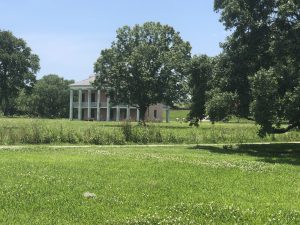
Chalmette Battlefield and the Beauregard House
This could fit either in this section or the next. I didn’t have any plan to visit the Chalmette Battlefield but I saw a sign for it as I was driving back into New Orleans to visit the Lower Ninth Ward Living Museum. It got me excited because I’d skipped Fort Morgan on Saturday due to lack of time and had realized I wouldn’t get to Fort Jackson despite being inspired by this post.
As I got off I-10 I saw abandoned roller coasters and realized it was the former Six Flags that was destroyed by Katrina. It’s an eerie site.
Although I visited the Jean Lafitte Visitor Center in the French Quarter and generally knew about the role of New Orleans in river access in both the War of 1812 and Civil War, I was a little fuzzy on the details. The Chalmette Battlefield is small but well preserved and like Shiloh, you can still imagine what went on here if you don’t look to the left and see the industrial elements of St. Bernard’s port. As the ranger said, the only thing different is the levees are a bit higher now.
This was totally a driving tour due to heat, limited time before my flight, but I’m so glad I got there. Something about visiting a site makes the history more real to me.
Katrina
I wasn’t even aware of the aforementioned Lower Ninth Ward Museum until someone I met at last year’s conference tweeted about it. I very much wanted to go, but wasn’t sure I’d have the time. Despite seeing the abandoned Six Flags and the Ranger mentioning the levee, I didn’t realize how close Chalmette was to the Lower Ninth – I was only about ten minutes’ drive from the museum. Nor did I realize until I got to the second half of Chris Rose’s book that Chalmette was decimated by the storm. I know some of this is shaped by my being overseas during and for 10 months after Katrina, but I feel like all we heard was the Lower Ninth Ward.
There are no words to describe the museum – a small five room portion of a house in the Lower Ninth Ward. Some of its back story is here. I realized, even while reading Chris Rose’s book, that so much of what I “knew” about Katrina and the Lower Ninth Ward was wrong, or at least wrongly portrayed by the national media. The museum goes in depth to explore the issues around looting, evacuation, the Danziger Bridge shooting and puts faces to some of the stories. It’s powerful and I’m so glad to hear they’re moving to a larger space to better tell the stories. It’s one we all need to hear.
I would not have stopped alongside the Canal had I not spotted the historic marker. Disaster tourism gives me the willies, and that’s why there are no photos of the Lower Ninth other than the museum and the marker/walls. I feel like the marker gives license, whereas the homes-in various states of fixed and not fourteen years later-are private and not meant for tourist consumption.
Standing beside the Industrial Canal was my last stop in New Orleans, but it wasn’t my first encounter with Katrina. In fact, I made a point of seeking it out in the former of Biloxi’s Katrina Memorial.
To further quote Chris Rose,
“It’s funny, but out there in the Great Elsewhere that is America, New Orleans seems to get most or all of the focus of the national media. As if this whole thing happened only in a place called the Lower 9th Ward. As the memory and images and impact of Katrina fade in the national consciousness, so, too, it seems, does the geographical and emotional scope of its damages, not to mention Rita’s. From the Texas border to Mobile Bay, a huge swath of America took a grenade. And everything changed everywhere.
I had no idea just how many died in Mississippi although I learned some of its impact there when I read The Washington Post’s ten year retrospective.
I know this is the tourism professional in me coming out, but it felt so wrong to only see the waterfront casinos, the French Quarter and think everything is and was fine. It wasn’t. It isn’t.
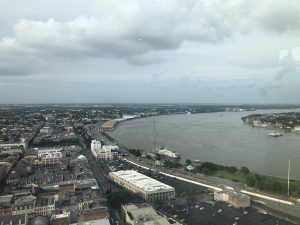
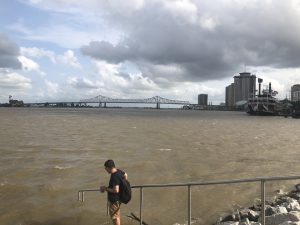
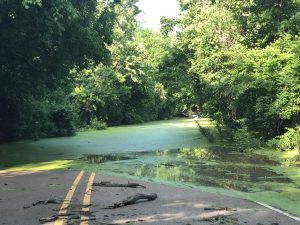
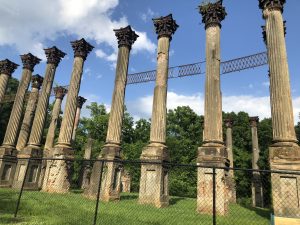
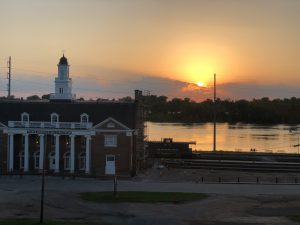
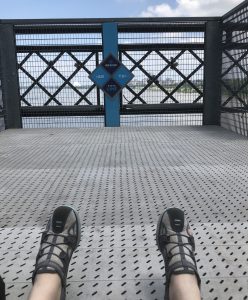
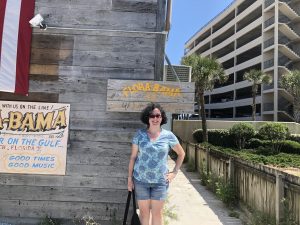
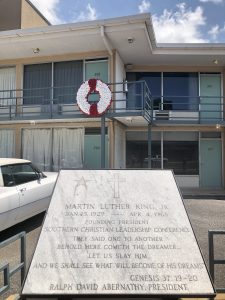
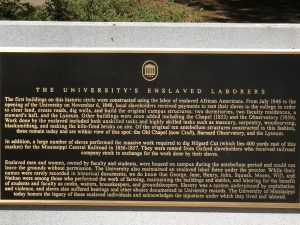
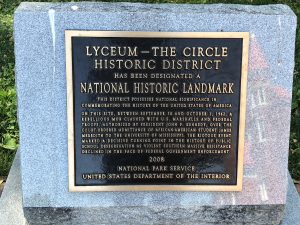
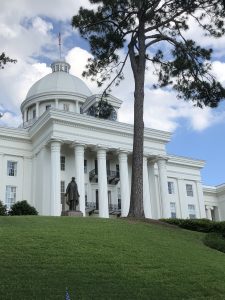
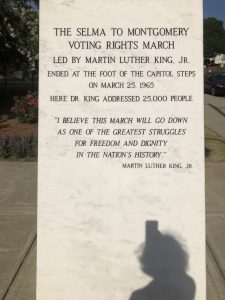
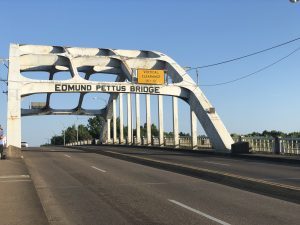
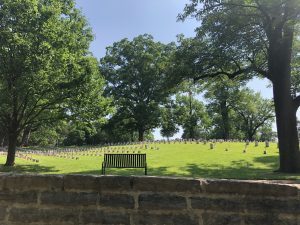
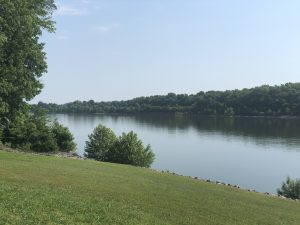
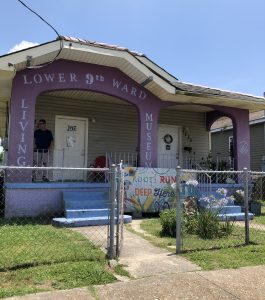
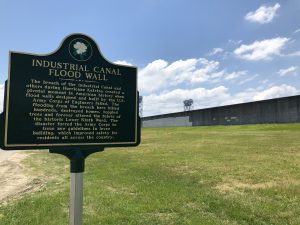
Wow is all I can say. You definitely travel the way I would want to if I had the time. I always rent a car when I am solo so I can see what I want to see….again never enough time.
Thanks for sharing all your pix on IG. ,I enjoyed them.
I need to see more of NYC rather than the same old same old but again, I’m there for work so there’s only the evening hours. At least now it is light enough to explore.
It’s funny — car rental is a fairly new thing for me. I first did it when I explored New Mexico and Colorado in 2015. I can’t believe how many options it opened up. And yes, sometimes it’s hard to see & do new things
Yes. It’s great to have the option to explore
Such an interesting trip. I’m all about the sights. I too haven’t been back to NOLA since Katrina. I definitely want to go back.
I’ve been to Alabama multiple times to visit Holly. Being from the ‘north’, the cultural differences between south and north are really apparent. The rebel flag flies proudly. There’s a Robert E Lee high school in Montgomery. Do we change this stuff? Or do we leave it as a reminder to our past and how far we’ve come, how far we still have to go? I love going to visit the south. It’s so fascinating. It’s also absolutely beautiful. Thanks for sharing your journey.
That’s what I loved about Mitch Landrieu’s comment about remembering but not revering history. It’s a complicated question. Me too – this was the first time I truly explored it and need to again.
Pingback: Running and travel |
You had quite a trip! I love visiting lesser known sites and learning more about history and local lore. I also enjoy toursity kitsch in small doses. I’m not great at planning road trips, but it sure sounds fun.
Google Maps is my crack for planning. Reminds me of the old AAA triptics. It always ends up overly optimistic – I should link you to my DC one so you can laugh. 3 visits and I still haven’t done it all.
I’ve been to Tennessee many times, but have not traveled to Mississippi, Arkansas, or Alabama. We visited many states as we drove to Utah for Bill’s grad school and camped our way back home two years later. A few months later we drove to Colorado and back home the following year. We’re going back to Utah next month with our kids for vacation (flying), but in the next year or two we’d love to rent an RV and spend two or three weeks driving all around the country.
I would love to fully drive cross country one day. In the mean time I’ve been flying to point X: ABQ, Denver or NOLA and done a road trip loop from there. Do you ever do trains? Loved going Seattle to Burbank and SF to Denver